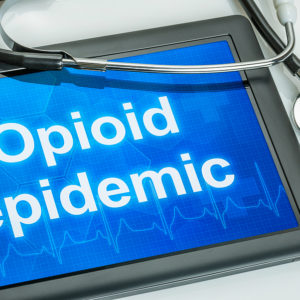Residents of Delaware Valley should be pleased to know that millions of dollars are being awarded to health and human services organizations in the early rounds of settlement money to support programs and services that mitigate and treat the devasting outcomes of opioid overuse and addiction. This money is part of an expected $62.5M opioid settlement with pharmaceutical distributors that will be used by the counties over the next 18 years.
The opioid crisis in the US has been taking millions of lives each year, especially among young adults, and has a web of causation with “no magic bullet to cure this epidemic” in the sentiment of Delco County Council members. Fair enough, but what should not be overlooked by county commissioners, health department officials, and law enforcement and court system leaders, such efforts, even when supported by unimaginable funding, does little to prevent those pushing our citizens into the quicksand of individual, family, and community destruction and death.
While a latest trend report on deaths due to opioids shows close to 2,900 deaths in 2018 in Pennsylvania, the influx of fentanyl and related synthetic opioids is ramping up many more deaths per year in Pennsylvania. For Southeaster Pennsylvania counties the rates (per 100,000 people) two-year period ending in 2016 to 2020 has increased from 2 to almost 24 times higher. And the total deaths for each year are expected to be much worse post the covid-19 shutdowns.
What our nation and county leaders need to do is march upstream to prevent, not just mitigate, the root causes of our opioid crisis. In the current thinking of how we approach public health problems, we use a water safety model to march upstream to see who is pushing people in the water and consequently needs to be rescued from drowning.
Such efforts to save people from drowning are heroic and heartwarming. However, those pushing people in the river of destruction have no compunction to continue and, in fact, fear not any downstream efforts such as youth risk awareness programs, harm reduction, treatment and recovery, the latter of which is a lifetime of work for those afflicted and many resources needed from the community.
Who is upstream in the opioid crisis? Yes, the pipeline of those who manufactured, promoted, distributed, proscribed, and sold “legal” opioids take some blame, and this is now well chronicled. However, what has come to light, but with little effort from legislators and a range of public officials from all levels of government to stop drug trafficking, is the robust manufacturing of fentanyl, mostly from China, and smuggling opioids and any of its constituents across our southern border.
It is easy and popular to damn the corporation, but takes courage, real work, and much risk to confront Mexico drug cartels, Mexico’s government officials, the Chinese Communist Party and any of their ostensible “leaders.” Furthermore, it is embarrassing to have to confront our own public officials from the President on down to stop aiding and abetting this carnage!
If no serious action is taken to work on upstream causes of our opioid crisis, no amount of lifeguarding and posting of warning signs will prevent bodies from struggling in this rip current of drug addiction. The silence and omission of any action from those who have taken the oath to defend and protect the public, is creating a moral hazard for all citizens. Consequently, many more people will die, with nary a word against who is pushing them to such destruction.
Please follow DVJournal on social media: X@DVJournal or Facebook.com/DelawareValleyJournal

